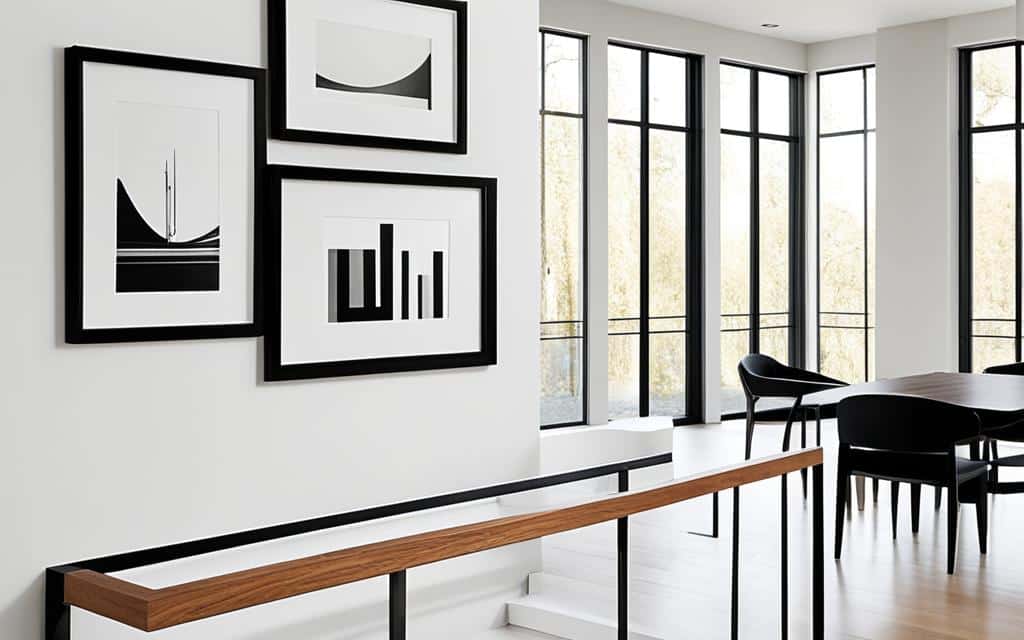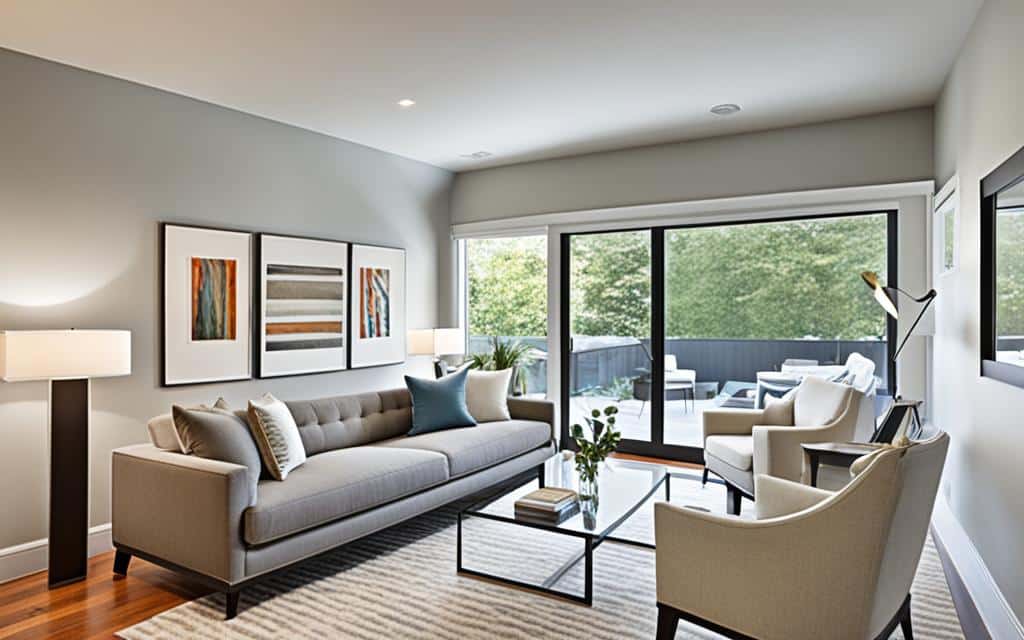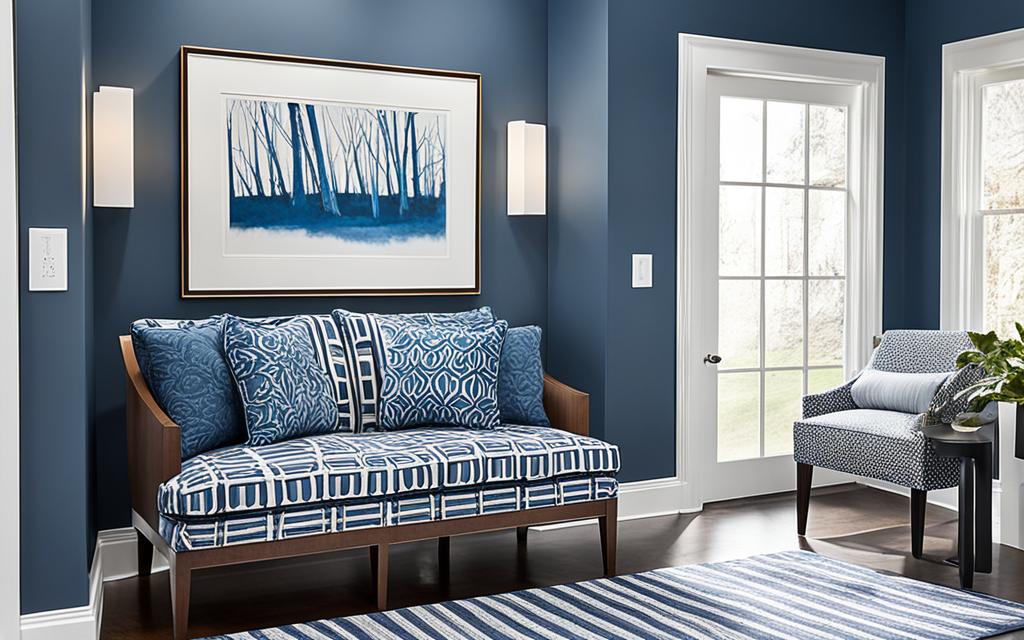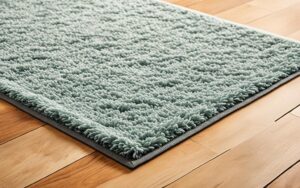As a seasoned home design enthusiast, I’ve witnessed the enduring charm of chair rails transform from a wall safeguard to a highlight of interior sophistication.
While the ubiquitous 30-inch rule of thumb may have dictated the chair rail installations of yesteryear, I’m here to attest that contemporary chair rail styles have elevated far above these traditional confines.
Are chair rails out of style? Absolutely not! Today’s design landscape invites an array of modern decor trends that showcase chair rails as not merely decorative additions but as versatile design counterparts.
Incorporating them with elements like dynamic wainscoting or leveraging them as functional ledges, chair rails have proven their adaptability and relevance in modern interiors.
In a celebration of both functionality and aesthetics, these elegant moldings continue to grace rooms with purpose—whether it’s housing decor in a charming bedroom or providing an architectural thread that guides one’s gaze up an inviting staircase.
Yes, the chair rail has confidently claimed its spot in modern homes, partnering effortlessly with both the classic and the contemporary.
Historical Significance and Evolution of Chair Rails
Reaching into the archives of design history, I often ponder the journey of chair rails from their birth in the stately homes of the Victorian era to the versatile design elements we utilize today.
Famous for their utility in protecting walls from the hustle and bustle of household activity, chair rails have convincingly transcended their original purpose to become a cherished decorative staple in the modern interior.
The Origin of Chair Rails and Their Functional Past
During Victorian times, the esteemed presence of chair rails became a necessity rather than an extravagance. These architectural treasures were initially forged as pragmatic solutions to protect walls from damage, safeguarding the integrity of luxurious wallpapers and meticulously painted surfaces.
It was this blend of pragmatism and elegance that ushered in chair rail design tips which continue to influence us even now.
Aesthetic Versus Utility: How Chair Rails Transcend Their Original Purpose
Gazing upon the impeccably crafted chair rails of yesteryear, it’s clear that they were more than mere wall defenders; they were aesthetic additions that epitomized the grandeur of their times.
Fast forward to today, and the ability to blend form and function has become a hallmark of contemporary chair rail styles. As I flip through a chair rail installation guide, I see not only a manual but a gateway to innovating and modernizing spaces with understated charm.
Adapting Chair Rails in Modern Interior Design
In today’s vibrant world of interior design, chair rail moldings are celebrated as handy design chameleons.
Whether standing sentry in a steamy bathroom clad in ceramic or marble or accenting the crisp lines of a Scandinavian minimalist setting, they are the perfect co-conspirators in integrating design elements.
Through creative application, chair rails are now dynamic partners in our homes, able to nimbly adapt to a myriad of design narratives, from the truly historic to the freshly contemporary.

As I consider the evolution of these design linchpins, it’s evident that their role has shifted spectacularly.
By embracing modern interior aesthetics, today’s chair rails have become versatile actors on the stage of home design, capable of infusing a space with both character and functionality.
The essence of chair rail trends lies in their ability to echo the past while seamlessly blending into the present – a testament to their timeless appeal and enduring relevance.
Are Chair Rails Out of Style?
Wading through the currents of modern design, I often confront the question: are chair rails out of style? To the joy of design aficionados, the answer swims against the tide of misconception.
Much like the timeless appeal of a perfect pair of denim jeans, chair rails have demonstrated a remarkable ability to stay afloat in the vast sea of modern decor trends.
Their sustained presence in design showcases the industry’s recognition of their versatile charm and functionality.

Doubters may argue that these architectural elements are fossils from a bygone era of home decor.
However, as someone who has laid eyes on countless interiors, I’ve observed chair rails making a robust case for their relevance.
Adopting the transformative spirit akin to a chameleon, these stalwarts comfortably blend into the backdrop of both fresh interiors and time-honored rooms with equal grace.
Furthermore, the many hues of chair rail design tips offer an artist’s palette for creativity. From framing bespoke wallpaper to acting as a functional shelf that harmonizes with a room’s decor, chair rails dance to the rhythm of innovation.
Have they become passé in the face of new-era minimalism? Far from it—they embrace modernity by reinventing themselves in ways that would have made their Victorian inventors proud.
Examining the industry’s pulse, one finds that design professionals nod in agreement; chair rails have not only weathered the storm of changing tastes but have also proven their adaptability.
Pair them with vibrant hues for a striking contrast, or align them with muted tones for a subtle, sophisticated divide. Implement them with aesthetic flair, and watch them revive a mundane wall with an eloquence that whispers of both heritage and vanguard trends.
In sum, peering through the lens of current styles, I revel in the realization that chair rails are the epitome of resilience and reinvention.
They’re not a remnant of the past but a lively and adaptive facet of modern interior design, reflecting a rich ability to evolve alongside our ever-shifting design sensibilities.
Modern Chair Rail Ideas and Trends
As an aficionado of innovative interior design, I relish exploring the vibrant spectrum of modern chair rail ideas. Contemporary home aesthetics have embraced chair rails, using them to redefine spaces with sophistication and multi-functional purpose.
Far more than just a decorative touch, these elements now offer enriched textural contrasts, serve protective roles, and help delineate spaces with unpretentious elegance.
From the humble entryway to the heart of the home—the kitchen—chair rails are being reimagined to combine protection with pizzazz.
Embracing chair rail trends of today, I’ve observed a move towards colors and materials that both contrast strikingly with their surroundings or blend in seamlessly, depending on the designer’s intent.
The use of wainscoting beneath a perfectly placed chair rail can create an elongating effect on walls, providing a sense of grandeur to rooms of all sizes.
In stairwells, a well-positioned chair rail is not only pleasing to the eye, but it stands guard against the daily wear and tear of a high-traffic area, proving that aesthetics can harmonize with utility in an almost artful ballet.
The nuanced application of contemporary chair rail styles is thrilling to watch unfold across a variety of living spaces. In my view, the real genius lies in the innovative use of chair rails as subtle separators that can turn an ordinary room into a visual tapestry of color and texture.
When implemented with a visionary’s eye, these classic design staples are transformed into dynamic features that fortify a room’s appeal, proving unequivocally that they are more than capable of advancing with the times.
As we look at modern interiors, chair rails stand proud as both guardians of tradition and heralds of contemporary design savvy.
FAQs
Q: Are Chair Rails Out Of Style?
A: Not at all! Despite their historical roots, chair rails have adapted to modern decor trends and have become a creative design element in contemporary homes.
When thoughtfully integrated, especially with modern chair rail ideas in mind, they offer both aesthetic and functional benefits to any space.
Q: What Is The Historical Significance Of Chair Rails?
A: Chair rails have a significant historical background dating back to Victorian times. Initially, they served a functional purpose to protect walls from damage by chair backs.
Over time, they evolved from their practical use to become a valued aesthetic addition to rooms, reflecting the grandeur of the era.
Q: How Have Chair Rails Transcended Their Original Purpose?
A: Chair rails have gone beyond mere functionality; they now play a major role in modern interior design. As an integrating design element, they have been repurposed to complement contemporary chair rail styles and add character to interiors, showcasing the versatility of this classic feature.
Q: Can Chair Rails Be Seen In Modern Interior Design?
A: Yes, you can see chair rails in various forms in modern interior design. They can be used to create visual division, enhance aesthetic appeal, and even as functional ledges or protective elements in places like staircases or hallways.
Their adaptability has allowed them to be a part of modernizing spaces effectively.
Q: What Are Some Modern Chair Rail Ideas And Trends?
A: Modern ideas for chair rails include using them in conjunction with wainscoting to create an elegant backdrop for a room, painting them in bold colors for contrast, or employing them as part of a multi-functional storage solution.
The use of different materials such as ceramic tiles or integrating chair rail molding as part of a contemporary design style are also trending.
Q: How Do Chair Rails Contribute To The Aesthetic Of A Room?
A: Chair rails contribute to the aesthetics of a room by defining spaces, creating visual balance, and adding a layer of sophistication.
They can be a subtle accent or a bold statement depending on their design and how they are incorporated with the rest of the room’s decor.
Q: Should My Chair Rail Match The Crown Molding?
A: While it’s not a strict rule, coordinating your chair rail with the crown molding can create a cohesive look. This could mean matching the profiles, styles, or colors, depending on your decor theme.
However, feel free to experiment with contrasting designs for a more contemporary appeal.
Q: How High Should I Install A Chair Rail?
A: The traditional height for a chair rail is approximately one-third the room’s wall height. However, modern trends allow for flexibility based on personal preference, room function, and design aesthetics.
The key is to ensure that the chair rail complements the proportions of the space it is in.









